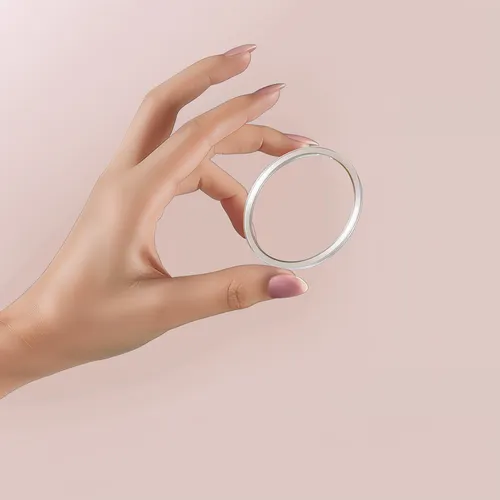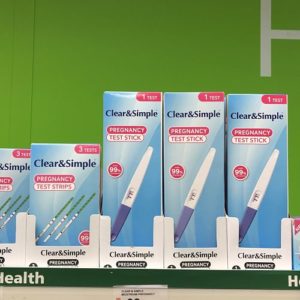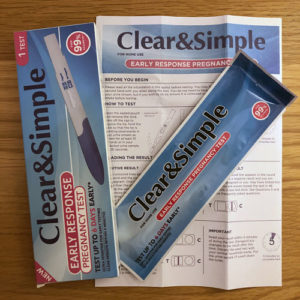The vaginal ring, also sometimes known as the NuvaRing, is a small, soft plastic ring that provides a convenient and effective form of hormone-based birth control. Once placed inside your vagina, it releases a low and constant dose of oestrogen and progestogen into the bloodstream to prevent pregnancy. This Zoom Baby blog post aims to provide a comprehensive guide to the vaginal ring, covering how it works, its effectiveness, the advantages, disadvantages, and potential risks.
How Does the Vaginal Ring Work?
The vaginal ring slowly releases the hormones oestrogen and progestogen into the bloodstream, preventing ovulation (the release of an egg) each month. It helps the cervical mucus to thicken, making it harder for the man’s sperm to reach the uterus. It also reduces the lining of the womb, lowering the chances of a fertilised egg implanting.
To use the ring, it is inserted into the vagina and left in place for 21 days. After this period, the ring is removed, and a 7-day ring-free interval is observed. During this break, you may experience a period-like bleeding. After the break, a new ring is inserted, and the cycle repeats.
It’s important to note that the ring provides protection against pregnancy right away if inserted within the first five days of the menstrual cycle. For insertions during other times of the cycle, additional contraception, such as condoms, may be necessary for the first seven days.
Effectiveness of the Vaginal Ring
When used how it should be, the vaginal ring is more than 99% effective in preventing pregnancy. This high level of effectiveness is similar to other hormonal contraceptive methods, such as the combined pill, implant, or intrauterine device (IUD).
Why You Might Love The Vaginal Ring
The vaginal ring offers several advantages over other contraceptive methods, which is why it is a popular choice with many women.
- Convenience: The ring provides contraceptive protection for a month. No need to remember to take a daily pill or schedule regular injections.
- Uninterrupted Sex: Unlike condoms or other barrier methods, the ring does not need to be put in before you have sex. This means uninterrupted intimacy! 😊
- Reliability: Unlike oral contraceptives, the ring is not affected if you are chucking up or have diarrhoea. This ensures consistent protection.
- Improved Symptoms: Many women are are happy to report lighter, more regular, and less painful periods while using the ring. It may also help alleviate premenstrual symptoms.
Downsides when using the Vaginal Ring
While the vaginal ring offers several benefits, it’s essential to consider its potential downsides.
- Insertion and Removal: Some women may feel uncomfortable inserting or removing the ring from the vagina.
- Spotting and Discharge: In the first few months of use, you may experience spotting or increased vaginal discharge.
- Temporary Side Effects: Common side effects include headaches, nausea, breast tenderness, and mood changes.
- No Protection Against STIs: Like other hormonal contraceptives, the ring does not protect against sexually transmitted infections (STIs). Use condoms for extra protection..
- Remembering to Change: You must remember to remove and insert a new ring every 21 days. If remembering is difficult, longer-acting methods like the contraceptive implant or IUD may be more suitable.
- Potential Drug Interactions: Certain medications can make the ring less effective, so it’s crucial to consult a healthcare professional for advice.
- Delayed Return to Fertility: After discontinuing the ring, it may take several months for your fertility to return to normal.
Risks Associated with the Vaginal Ring
While the benefits of the vaginal ring often outweigh the risks for most women, it’s essential to discuss all potential risks with a healthcare professional before starting this method. The primary risks include:
- Blood Clots: A small number of women using the vaginal ring may develop a blood clot in a vein or artery. If you have a history of blood clots, the ring may not be suitable.
- Cancer Risk: Research suggests a slight increased risk of breast and cervical cancer with long-term use of combined hormonal contraceptives like the vaginal ring. However, this risk decreases over time after discontinuing the method.
Who Can Use the Vaginal Ring?
The vaginal ring may not be suitable for women with certain medical conditions, including:
- A history of blood clots
- Heart or circulatory problems, including high blood pressure
- Smoking and being over 35 years old, or having stopped smoking within the past year
- Migraine with aura (warning symptoms)
- Breast cancer within the past five years
- Diabetes with complications
- Obesity
- Medications that may interact with the ring
- Inability to hold the ring in the vagina
Women who don’t smoke and have no medical contraindications can generally use the vaginal ring until the age of 50.
Where to get your Vaginal Ring
In the United Kingdom, contraception, including the vaginal ring, is available for free from various healthcare providers, such as contraception clinics, sexual health clinics, some GP surgeries, and youth services. However, not all clinics offer the vaginal ring, so it’s advisable to check in advance.
Prescriptions for the ring are typically limited to a four-month supply due to its shelf life. It’s also possible to find your nearest sexual health clinic by visiting the NHS website.
Confidentiality for Those Under 16
In the UK, contraception services are free of charge and confidential for young people under the age of 16. Doctors and surgeries are bound by strict guidelines when dealing with under 16’s. They are not allowed to give information to parents or caregiver without consent. This is the case if the individual fully understands the information provided and the decisions they are making.
Your health provider can only consider disclosing information if they believe the individual is at risk of harm, such as abuse. In these situations, the risk would need to be serious, and they would typically discuss it with the young person first.
The Zoom Baby verdict
Vaginal rings are a pretty handy and reliable way to prevent pregnancy using your body’s own hormones. They just keep on working non-stop for up to a whole month, which makes them an easy choice of contraception.
Before you go down that route, it’s also important that you think about any potential downsides or risks. Make sure you have a good chat with your GP or gyno before trying out any sort of contraception. Your doctor can give you the proper guidance and answer any questions you might have.
Remember, contraception is a very personal thing. What works for one woman might not be the best fit for you. Have a think about your own needs, your lifestyle, and any health issues you might have. Once you’ve spoken to your doctor you can make the best choice for managing your fertility and avoiding getting pregnant.
As always, the key is finding the contraceptive option that suits you best. Do your research, talk to the professionals, and figure out what’s going to work best for your body and your life!
Photo by Anthony Cunningham for Zoom Baby
Zoom Baby is a leading supplier of Pregnancy Tests and Ovulation Test Kits





